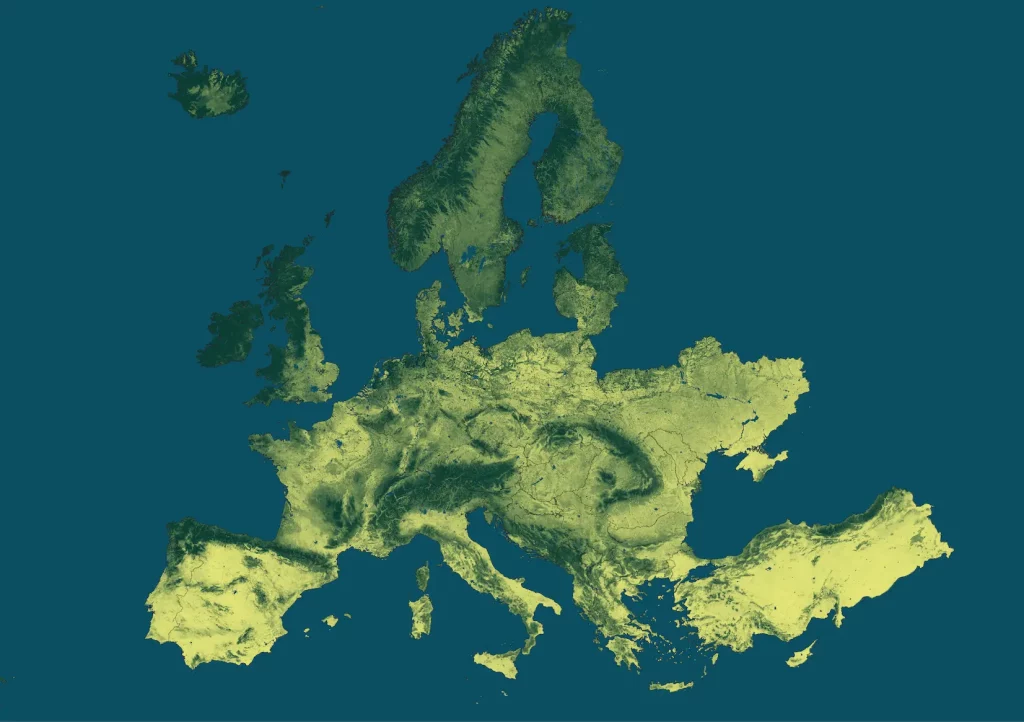Soil health data cube
Introduction
AI4SoilHealth is building a Soil Health Data Cube to aid the sustainable management of Europe’s soils by integrating crucial data on soil, climate, and vegetation into a unified, decision-ready format.
Why is building a data cube important for European soil health management?
The Soil Health Data Cube aims to enable European soil health management as it integrates vast, diverse data layers related to soil, climate, and vegetation into a unified, decision-ready format. Managing soil health across Europe requires access to consistent, high-quality data that spans different regions and timeframes. By building a data cube, data from the years 2000 to2023 and beyond can be efficiently organised, analysed, and compared, allowing policymakers and farm managers to assess soil health trends in a specified area (from farm to the continent). They can also predict outcomes under different scenarios, identify unhealthy or degraded soil spots, and make data-driven decisions about land use and soil management in the area. The data cube supports long-term soil health assessment by making it easier to identify degradation patterns, assess current soil conditions, and predict future soil health in relation to climate change.
How is the AI4SoilHealth project working towards the goal?
The AI4SoilHealth project is developing the data cube by integrating Earth Observation based time series of biophysical, soil and management-oriented spectral indices, soil maps, crop-type maps, land degradation maps and surface’s response to the climatic change related to the 8 soil health indicators, all at a high spatial resolution (30 m) across Europe. You can read more about the data available in: Tian et al. 2024a; Tian et al. 2024b and Minarik et al, 2024). These data sets are combined into a unified system (a data cube), which can then be analysed to identify, quantify and upscale relationships between field-estimated soil health indicators and earth observation-based data into multiscale soil health indices (from farm to the continent). This holistic approach enables continuous monitoring and detailed insights into soil health across Europe, promoting better soil management practices. The system’s accessibility via the EcoDataCube.eu infrastructure ensures that the data is open and available to a diverse range of users.
How the data cube could change the way we manage soil in Europe?
The implementation of a data cube could revolutionize soil management in Europe by:
- Enabling precision agriculture: Providing precise data allows for tailored soil management practices that are specific to the needs of a particular region. This can allow for the optimisation of agricultural inputs and targeted interventions to improve yields.
- Predictive analysis: Using historical data to forecast future soil conditions and potential issues can help in proactive management and mitigation strategies.
- Integrated decision making: This technology allows for a more holistic approach. By integrating various types of data (climate, topography, soil health) at the same time, different stakeholders can make informed decisions on management strategies together.


How the data cube will benefit soil managers – farmers, polluted site remediators, foresters, and the policy makers surrounding those groups?
- Farmers: Farmers and their agronomists will gain access to localised, high-resolution data on the soil on their farm and any trends occurring there. This will enable them to implement more sustainable and productive farming practices. By understanding how their soil will react to different management scenarios, farmers can better plan crop rotations, irrigation, and fertilisation strategies that align with the long-term health of the soil.
- Polluted site remediators: For professionals working on soil remediation, the data cube will provide essential information on the current status of degraded soils and insights into how different remediation efforts can improve land quality over time. The system will also help track progress and effectiveness of remediation efforts.
- Foresters: Foresters can use the data to assess soil and vegetation dynamics, helping to manage forests sustainably. The information on soil properties and land degradation can guide reforestation efforts, land conservation, and forest management plans to enhance resilience to climate change.
- Policy makers: The data cube will provide critical data that policy makers can use to develop policies aimed at improving soil health at regional and national levels. The ability to predict the impact of various land management practices under different scenarios ensures that policies can support an effective and resource efficient transition to sustainable practices across Europe.
Examples for how data cubes can be used
- Multiscale hotspot identification: The Soil Health Data Cube identifies fields or regions where soil health is at risk, highlighting areas that need urgent restoration. For example, Southern Europe faces soil degradation and erosion due to intensive farming and desertification, while Eastern Europe is dealing with pollution from past industrial activities. These regions are flagged as hotspots where immediate soil recovery efforts are critical.
- Identify possible drivers for soil health change: With a changing climate altered rainfall patterns and rising temperatures deplete soil moisture and increase erosion, as seen in parts of Southern Europe. Likewise, over-farming and chemical overuse in agricultural zones lead to soil nutrient loss and degradation, particularly in Eastern European farmland. By identifying and tracking these drivers the data cube enables targeted interventions to restore soil health.


Find out more
Tom Hengl from OpenGeoHub (et al) explains how soil health data cube is revolutionising how we monitor soil by combining advanced technologies like remote sensing and soil spectroscopy.

